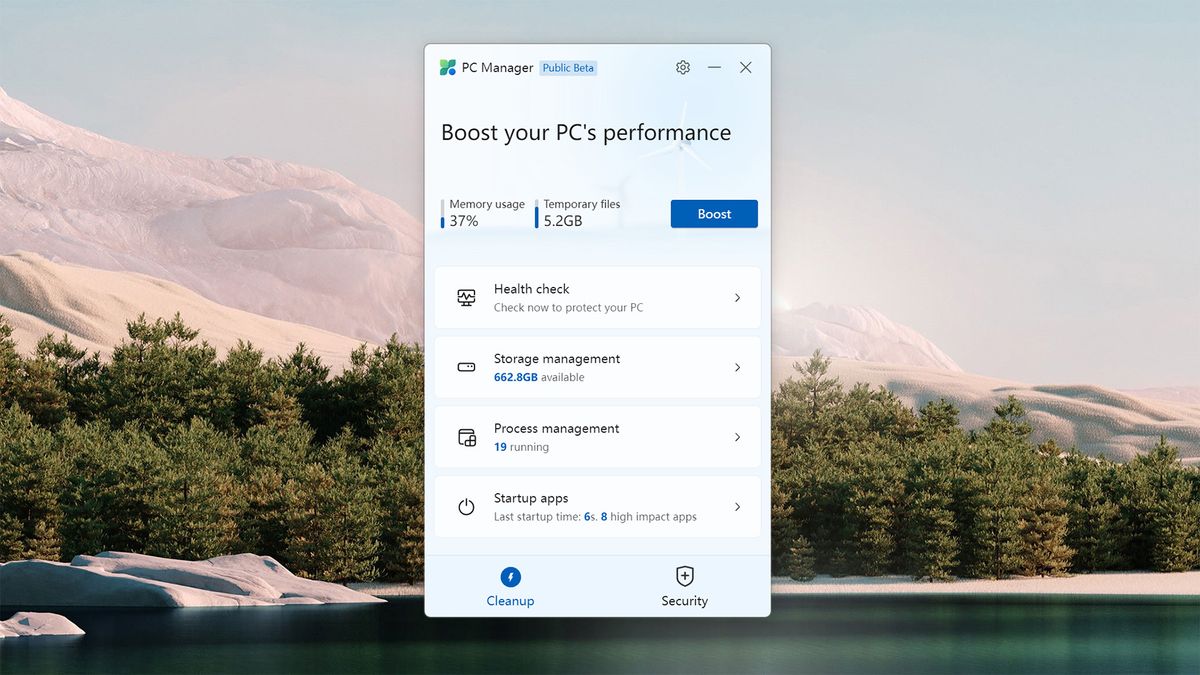Microsoft has a new app for generally keeping your PC in good working order. It’s called PC Manager, and while it’s technically not fully released yet, I’ve given it a whirl to see what it’s all about.
PC Manager is a compact application that offers more shortcuts to lesser-known or not often used features of your Windows PC. It helps clear up your storage drives, for example, or offers an at-a-glance nod to your startup time and what apps might be affecting it. You can even disable the apps hitting your boot time hardest from here.
It also offers a ‘Boost’ button that cleans up all your temporary files for a session, helping to free up precious memory. You can also tailor which files you’d like Windows to eradicate on your behalf, which is where Microsoft has slyly attempted to get users to restore their default browser to Edge.
No thank you.
There’s also a security section with shortcuts to Windows Update, browser security, and pop-up management. You can even run a quick scan from within this section.
It’s a fairly sleek app, too, though in my use of it I did feel it’s one of those things I’ll use once and then never open again. But perhaps I’m not the target audience, and I dare say most, if not all, of you reading this won’t be either. As a windowed application it’s another app to have open on the desktop, and you can access these settings elsewhere if need be. Perhaps as a pop-up card or shortcut it’d be a touch more useful, but I don’t think users familiar with what Windows has to offer will gain much from the app as it looks and operates today.
Window shopping
Windows 11 review: What we think of the new OS
How to install Windows 11: Safe and secure install
What you need to know before upgrading: Things to note before downloading the latest OS
Windows 11 TPM requirements: Microsoft’s strict security policy
The app has been in beta for a few months, reports Aggiornamenti Lumia (via Windows Central), but has only recently been added to the Windows Store. The listing is hidden as of today. The account also notes that it appears there are two versions of the app preparing for release, but the difference between them is not clear.
If you want to try it for yourself, you have to head to the Chinese-language webpage for the public beta version. This has an official Microsoft certificate and is a subdomain of the Microsoft site, and suggests Microsoft is targeting the Chinese market with the app first of all. With a view to launching it elsewhere around the world at a later date, perhaps.


